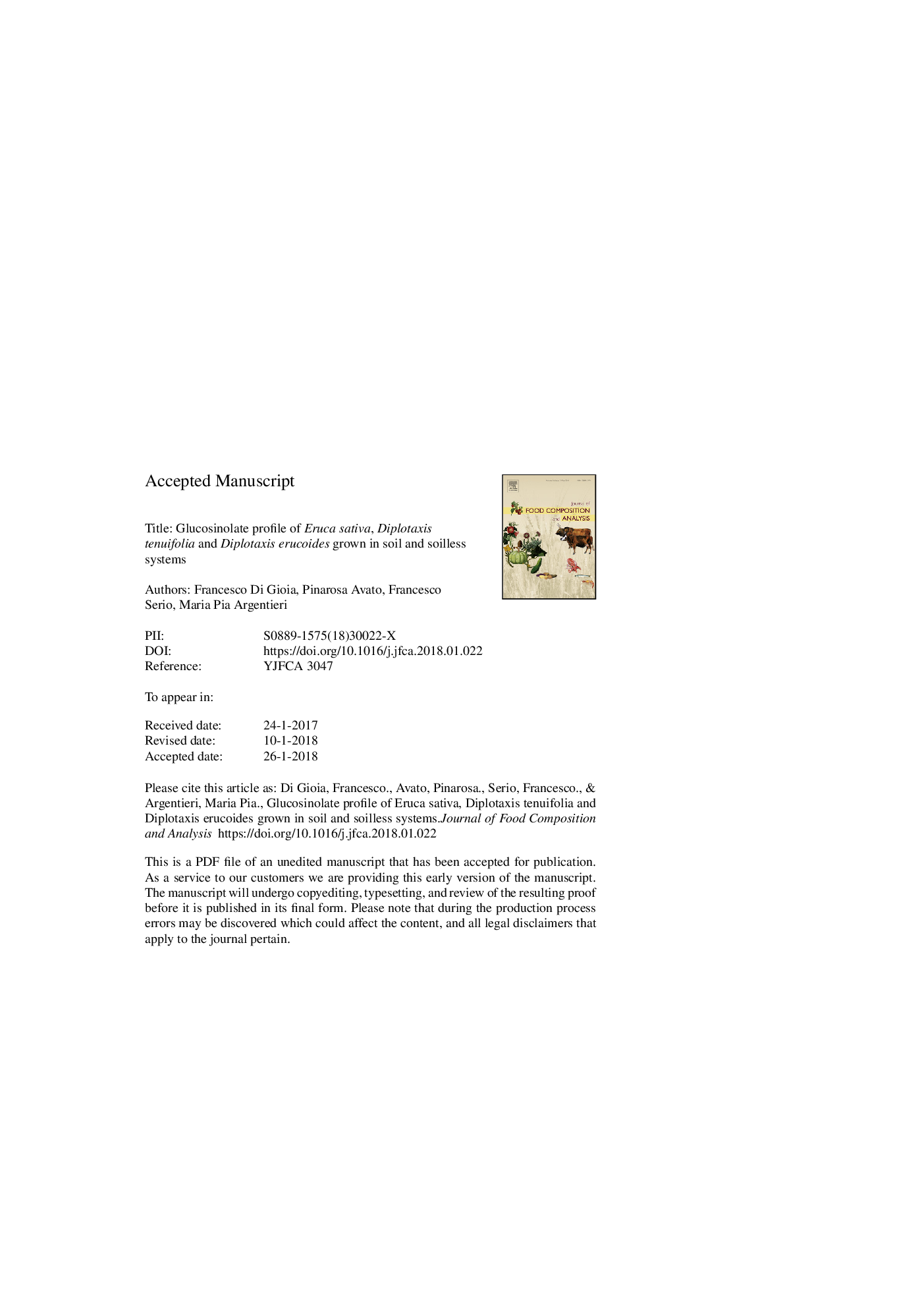| Article ID | Journal | Published Year | Pages | File Type |
|---|---|---|---|---|
| 7619706 | Journal of Food Composition and Analysis | 2018 | 27 Pages |
Abstract
Soilless cultivation systems (SCS) are increasingly used to produce high quality baby-leaf arugula, appreciated by consumers for its pungent taste, due to the content of glucosinolates (GLS). Given all of the health benefits attributed to GLSs, there is great interest in understanding whether and how soilless growing systems may affect the GLS profile of arugula. For this purpose, a study was conducted to compare the GLS profile of Diplotaxis erucoides, D. tenuifolia, and Eruca sativa grown side-by-side under protected environment in a conventional soil-system (CSS) and in a SCS. Genotype and growing-system resulted in a significant effect on GLS content, while the resulting qualitative GLS profile was species-specific. Despite the growing-system, six different GLSs were identified from plants of D. tenuifolia and E. sativa, while only sinigrin was detected in plants of D. erucoides. Total GLS content was on average 9.85, 8.23, and 7.96â¯mgâ¯gâ1 of dry weight in D. erucoides, D. tenuifolia, and E. sativa, grown in CSS, respectively. The same three species grown in SCS synthesized 36%, 51%, and 41% more GLSs than plants grown in CSS, respectively. Soilless cultivation may be adopted to increase the GLS content and enhance the nutritional quality of brassicas leafy vegetables.
Keywords
Related Topics
Physical Sciences and Engineering
Chemistry
Analytical Chemistry
Authors
Francesco Di Gioia, Pinarosa Avato, Francesco Serio, Maria Pia Argentieri,
